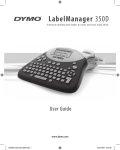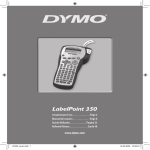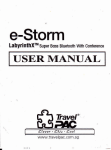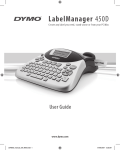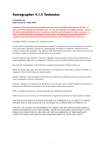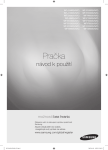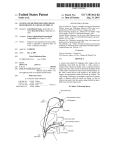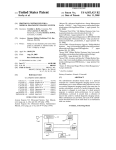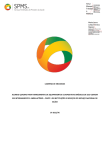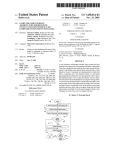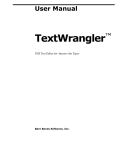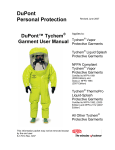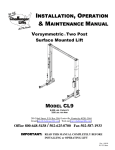Download Method for authoring hints for a font using a graphical user interface
Transcript
US006552727B2 (12) United States Patent (10) Patent N0.: US 6,552,727 B2 (45) Date of Patent: Apr. 22, 2003 Stamm (54) METHOD FOR AUTHORING HINTS FOR A FONT USING A GRAPHICAL USER INTERFACE 5,710,880 A 5,715,473 A 5,777,627 A 6,144,765 A (75) Inventor: Beat Stamm, Kirkland, WA (US) 73 1/1998 Howlett et al. 2/1998 Reed 7/1998 Takazawa * 11/2000 Tamura et al. ............ .. 345/467 OTHER PUBLICATIONS As' fC 0rp., Rd s1gnee: M'lcrosot e mon dWAUS , FoutLbP 'h1997F a owr typograp hC y, opyr1g t ont LbDl a eve - oper’s Group, pp. 110—111, 135—137, 361, 143—145, (*) Notice: Subject to any disclaimer, the term of this patent is eXIended 0r adjusted under 35 U.S.C. 154(1)) by0 days. 185_188, 197_198, 225_240, and 255—328, Macromedia Fontographer user’s Manual, Version 4.1. 3’d Ed., Copyright 1996 by Macromedia, Inc., pp. 123, 351, 296—314, 332, and 357—359. (21) Appl, No.1 09/961,418 Microsoft True Type Editor (TTED)—Ted User Guide, Ted _ Talk Language Guide, Revision 1.0, Copyright 1996 (22) Flled: Sep' 25’ 2001 Microsoft Corporation, pp. 1—74. (65) Prior Publication Data IBM Technical Disclosure Bulletin article titled “User Inter face 2—level Selectable Error Message Display during Drag/ US 2002/0033824 A1 Mar. 21,2002 Drop,” VOL 37, NO_ 8, Aug 1994_ Related US. Application Data 63 ( ) (51) (22) ( 8) Ct . t . f l . t . * Cited by eXaminer N.09049633 ?ld 2211513517133‘; a?fgdfgehfn 0 / ’ ’ e on M. at Int. Cl.7 .............................................. .. G06T 11/00 1e C11.‘ ...... ........................... .. 345/4657; 345/471 0 525646; / (56) ’ ' ’ ’ ’ ' ’ ’ Primary Examiner—l\/lano Padmanabhan (74) Attorney, Agent, or Firm—Banner & Witcoff, Ltd. (57) ABSTRACT Authoring hints for a font using a graphical user interface‘ Graphical hints may be dragged and dropped on a displayed glyph using a graphical user interface. A graphical hint is References Cited speci?ed by selecting a hinting tool and selecting one or US. PATENT DOCUMENTS point. A graphical hint is represented by a graphical element more points that de?ne the glyph outline, such as a control 5,155,805 A 5,325,479 A 5,583,978 A 10/1992 Kaasila 6/1994 Kaasila 12/1996 Collins et 211. 5,586,241 A 12/1996 Bauermester et 211. 5,673,371 A 9/1997 Koopman et 211. displayed on the glyph. The graphical hint can be automati cally compiled and included in a font table. The compiled graphical hint is used to display the hinted glyph. 57 Claims, 17 Drawing Sheets quick brown foxjumps over the lazy dog. 1*‘206 brown fox jumps over the lazy11% . _l K U.S. Patent Apr. 22, 2003 M~0E_._50 E5 Sheet 1 0f 17 @w u m855(2 5\mata5.- m25r\ 0(2523X:2555m5 V <5“, Lg m2059 2@n58 M@\2m55551 @5mm zME"598>m5o 2.-5k0m.25ca/m5_mL a555, 5 E5mm525,2 5%m52550:365 2552, $ _ l 5 m .2E. -ME( US 6,552,727 B2 éE5wx2v‘m30?J%w:52m?woé 5 2055 85 ,5 a“ 2 no,, \)5 E5 J 5@285 wzgom2?950w%ml< p\5 V , 5:92 5£E58 U.S. Patent Apr. 22, 2003 Sheet 2 0f 17 [1,20, US 6,552,727 B2 FIG. 2 (200 mammwwgggggggégi?m 222 ,L| InnmnonomoommmThe quick brown fox. jumps over the lazy dog. 1" ‘206 K204 . pnmnonomoonmm'lhe qulck brown fox Jumps over the lazy dog. I XLin I 246’? 248/1 2507+ .11. in 50V m 01 a)’ dADWk Q 80'?AR) 1 -1 W3 266T 8 CD 11:01 % (210 1 _ _ _ _ _ _ _ _ _ _ _ _ _ _ _ _ _ _ _ _ _ _ _ _ __ _1_ _ ._ 1 Fir l1mimlminlmin9mlE¥luEgllnlnlrltllmmrPglmmmm 81014 16 18 20 22 Z4 Z6 28 30 32 34 E1 Ic> U.S. Patent Apr. 22, 2003 Sheet 3 0f 17 FIG. 3A US 6,552,727 B2 U.S. Patent Apr. 22, 2003 US 6,552,727 B2 Sheet 4 0f 17 6%) Eggs FIG.38 ?lg % Y-DIFECTON SMAITNROMKDUE ODIPSTANCE X-DIRECTON SMAITNROMKDUE ODIPSTANCE g 13> mime 5M3 g E D @1501? @g éi'ilg ?lg n @1501? EIQ @Q ?g i a? U.S. Patent Apr. 22, 2003 Sheet 5 0f 17 US 6,552,727 B2 FIG. I 7 U.S. Patent Apr. 22, 2003 Sheet 6 0f 17 US 6,552,727 B2 FIG. 5 WI/ ?” WIM @IH M wI H wlxsiQOAI FQ w) \\WI; \ E m MII ‘2 X-DIRECTION Y-DIRECTION FIOUNDING ROUNDING OPTIONS OPTIONS I+_I: U.S. Patent Apr. 22, 2003 Sheet 7 0f 17 FIG. 6 612 602 614 606 US 6,552,727 B2 U.S. Patent Apr. 22, 2003 Sheet 8 0f 17 US 6,552,727 B2 U.S. Patent Apr. 22, 2003 802 Sheet 9 0f 17 US 6,552,727 B2 U.S. Patent Apr. 22, 2003 Sheet 10 0f 17 US 6,552,727 B2 FIG. 9 [901 1/ l \ 0 o o \\ 903j K904 o U.S. Patent Apr. 22,2003 Sheet 11 0f 17 US 6,552,727 B2 FIG. 10A , /“1004 COMPLETE CVT v r1006 SELECT A GLYPH 1 v $1008 HINT SELECTED GLYPH v p1010 COMPILE HINT(S) , f1012 DISPLAY HINTED GLYPH 1014 APPEARANCE OF HINTED GLYPH SATISFACTORY? 1016 IS FONT COMPLETELY HINTED? 1018 U.S. Patent Apr. 22, 2003 Sheet 12 0f 17 US 6,552,727 B2 FIG. 10B SELECT-HINTING TOOL v SELECT FIRST CONTROL POINT /“IO22 v SELECT SECOND CONTROL POINT P1024 II FIRST GRAPHICAL ELEMENT IS DISPLAYED F1026 II SELECT FIRST GRAPHICAL ELEMENT II SELECT THIRD CONTROL POINT I SECOND GRAPHICAL ELEIVIENT IS DISPLAYED F1032 U.S. Patent Apr. 22, 2003 Sheet 13 0f 17 US 6,552,727 B2 FIG. 10c SELECT HINTING TOOL W100, P1040 SELECT FIRST iONTROL POINT /\1042 SELECT SECOND‘LCONTROL POINT /'\1O44 l IS DISPLAYED GRAPHICAL ELEMENT /‘I 046 U.S. Patent Apr. 22, 2003 Sheet 14 0f 17 US 6,552,727 B2 FIG. 10D SELECT HINTING TOOL I SELECT FIRST CONTROL POINT F1052 I SELECT SECOND CONTROL POINT I FIRST GRAPHICAL EL EMENT IS DISPLAYED /"1056 I SELECT THIRD CONTROL POINT A1058 TT SELECT FOURTH CONTROL POINT A1060 I SECOND GRAPHICAL ELEMENT IS DISPLAYED F1062 I THIRD GRAPHICAL ELEMENT IS DISPLAYED /“1064 U.S. Patent Apr. 22, 2003 Sheet 15 0f 17 FIG. 10E SELECT HINTING TOOL US 6,552,727 B2 r1008 /“1070 SELECT FIRST CONTROL POINT P1072 GRAPHICAL ELEMENT IS DISPLAYED /'\1074 U.S. Patent Apr. 22, 2003 Sheet 16 0f 17 US 6,552,727 B2 FIG. 11A /11OO 1101 1103 FIG. 11B U.S. Patent Apr. 22, 2003 Sheet 17 0f 17 US 6,552,727 B2 FIG. 11C ' 1108 FIG. 11D /11OO ~1112 US 6,552,727 B2 1 2 METHOD FOR AUTHORING HINTS FOR A FONT USING A GRAPHICAL USER INTERFACE compiled font instructions are used to display a bitmap for CROSS REFERENCE TO RELATED APPLICATIONS This application is a continuation of prior application Ser. No. 09/049,633, ?led Mar. 27, 1998 noW abandoned, Which is incorporated herein by reference herein. 10 FIELD OF THE INVENTION This invention relates in general to authoring hints for a font, and in particular to authoring hints for a font using a graphical user interface. to insert the additional font instruction is not usually obvi ous. If the additional font instruction is not inserted in the correct sequence, then the font instructions Will not be 15 Afont is a particular style of typeface such as Arial, Times NeW Roman or Courier. Fonts Which conform to the Tru eType Open font standard promulgated by Microsoft recogniZe a circular relationship if the circular relationship is shoWn graphically on the glyph outline, than if the circular relationship is only apparent from the font instructions. 25 A glyph is a representation of one or more characters. A single glyph may represent a single character such as the loWercase letter “f” or a single glyph may represent a string of characters such as the ligature “?”. To display or print a glyph, the glyph outline is ?rst scaled to the selected font siZe and the resolution of the output device. The scaled glyph outline is then digitiZed or scan converted to create a bitmap. Finally, the bitmap is rendered on an output device, such as a monitor or a printer, using a regularly spaced grid of picture elements (“pixels”). Scaling San Francisco, Calif. The Fontographer program assists a program alloWs a typographer to specify horiZontal and vertical serif hints, horiZontal and vertical stem hints, and diagonal hints. For example, to specify a vertical stem hint, the typographer selects tWo points Which de?ne the vertical 35 of the vertical stem by specifying the x-coordinates of the glyph. Hints typically control distances, proportions and pixel patterns. by the Fontographer program. For example, the Fontogra 45 values are stored in a font table commonly referred to as a 55 distance in the y-direction betWeen tWo control points. The typographer then draWs these relationships on the glyph outline using colored pencils. instructions, the font instructions are compiled and the pher program does not support interpolations or alignments. Another draWback of the hinting tools provided by the Fontographer program is that hints must be speci?ed in coordinates. For a TrueType font, it is more ef?cient to specify a hint using a control value. A control value is a value for a dominant Width, length, or angle of a group of features, such as the stem Width or serif length. Control process. To begin creating hints for a glyph, the typographer typically prints a glyph outline for the glyph. The glyph outline includes control points Which de?ne the shape of the glyph. The typographer uses the glyph outline to visualiZe critical relationships betWeen the control points, such as the Once the typographer draWs the relationships on the glyph outline, the typographer translates the colored pencil mark ings into font instructions. The translation requires that the typographer not only convert the relationships into the proper TrueType commands, but also requires that the typographer order the commands according to the command sequence requirements of the TrueType Instruction Set. Once the typographer translates the relationships into font stem and then selects the “make vertical stem” command from the hints menu. The typographer may control the Width stem. Typically, the x-coordinates of the stem are speci?ed by editing the stem start and stem stop ?elds of a menu. One draWback of the Fontographer program is that the hinting tools are limited. The TrueType instruction set includes many hinting instructions Which are not supported tions are added to the font to improve the appearance of the distance in the x-direction betWeen tWo control points or the One proposed solution to the hinting problem is provided by the Fontographer program marketed by Macromedia of typographer in designing a font by providing tools to support glyph outline design. The Fontographer program also pro vides some rudimentary hinting tools. The Fontographer the glyph outline may not produce satisfactory results at all point siZes. At small point siZes, a loW-resolution device may not have enough pixels to ?ll in the outline accurately. To compensate for the lack of pixels, hints or font instruc For a TrueType font, a typographer may specify hints for the entire font or for individual glyphs using an assembly type language. The typographer may use the loW-level TrueType Instruction Set, or a high-level abstraction of the TrueType Instruction Set, such as Type Man Talk. Creating hints using one of the TrueType languages is often a tedious correctly applied. For the majority of typographers, it Would be easier to hint a glyph if the relationships draWn on the glyph outline could be translated into font instructions Without the typographer’s intervention. In addition, it is easier to prevent or debug hinting errors, if the font instructions are shoWn on the glyph outline. For example, it is easier for the typographer to BACKGROUND OF THE INVENTION Corporation, assignee of the present invention, are com monly referred to as TrueType fonts. TrueType fonts contain font tables that include data, such as glyph outlines, metrics, bitmaps, and mapping information. A glyph outline is a set of mathematical data that describes the shape of the glyph. the glyph. The typographer revieWs the bitmap to determine Whether the appearance of the hinted glyph is satisfactory. If the appearance of the hinted glyph is not satisfactory, then the typographer must modify the font instructions or add additional font instructions. The typographer must repeat these steps until the appearance of the hinted glyph is satisfactory. If the typographer adds an additional font instruction, then the typographer must determine Where to insert the font instruction. Because the TrueType Instruction Set requires certain command sequences, determining Where control value table (“cvt”). Some control values are speci?c to certain glyphs, While other control values apply to the entire font. Requiring hints to refer to control values makes it easier to preserve regularity betWeen the glyphs of the font. Yet another draWback of the Fontographer program is that it displays hints outside the glyph outline. Displaying hints outside the glyph outline makes it difficult to identify the control points associated With a hint. Furthermore, Fontog rapher does not have a built-in rasteriZer so a typographer cannot immediately see hoW a hint affects the appearance of a rendered glyph. The lack of a built-in rasteriZer makes it 65 dif?cult to ?ne-tune pixel patterns and stroke Weights. Accordingly, there is a need in the art for a method for authoring hints for a glyph using a graphical user interface. US 6,552,727 B2 3 4 There is also a need in the art for a graphical method for control point and the arroWhead is connected to the child authoring hints using control point values. control point. The typographer can specify options for the link, such as a stroke category option, a minimum distance SUMMARY OF THE INVENTION option, or a cvt value by selecting the desired options from a menu. The selected stroke category option is represented The present invention meets the needs described above by permitting a typographer to drag and drop graphical hints on a displayed glyph using a graphical user interface. The graphical user interface provides the typographer With a number of hinting tools Which correspond to hinting func by the shape of the arroWhead of the graphical element representing the link. The selected minimum distance option and the selected cvt value are represented by graphical components displayed With the graphical element. tions. The typographer speci?es a graphical hint by selecting types of hints, including an interpolation. To specify an The graphical user interface can be used to specify other a hinting tool and selecting one or more points that de?ne the glyph outline, such as a control point. The graphical hints are interpolation, the typographer selects the interpolate tool. The typographer then drags the interpolate tool betWeen a ?rst control point and a second control point. A graphical represented by graphical elements displayed on the glyph. The shape and color of the graphical elements indicate the type of hinting function. Options for the graphical hints are 15 represented by graphical components. parent control points for the interpolation. The typographer The graphical hints are compiled and placed in the font selects the band and drags the band to a third control point. The graphical element changes from a band to a pair of tables Without requiring that the typographer manually code the hints. Once the graphical hints for a glyph are compiled, the hinted glyph is displayed. If the appearance of the hinted glyph is not satisfactory, then the typographer can modify the eXisting graphical hints or add additional graphical hints until the appearance of the hinted glyph is satisfactory. The typographer can modify an existing graphical hint by select ing a portion of the graphical element and modifying the aspect of the hint that corresponds to that portion of the graphical element. For eXample, the typographer can modify the parent control point of a link by selecting the tail of an element, such as a band, appears betWeen the tWo control points. The band indicates that the tWo control points are the arroWs. The tail of one of the arroWs is connected to the ?rst control point and the arroWhead is connected to the third control point. The tail of the other arroW is connected to the second control point and the arroWhead is connected to the third control point. The pair of arroWs is a graphical repre 25 arroW representing the link and dragging the tail to a neW parent control point. sentation of the interpolation of the third control point betWeen the ?rst control point and the second control point. The graphical element and the graphical components can be used to modify the graphical hints. By selecting different portions of the graphical element, different aspects of the hint are modi?ed. For eXample, selecting the tail of the arroW representing a link or an interpolation alloWs the A number of tools are provided by the graphical user typographer to select a neW parent control point. Selecting interface, including vieWing tools, control point tools, hint a graphical component representing the minimum distance ing tools and display tools. The display tools include snap shot, jump back and siZe run tools. The vieWing tools include tools for panning, measuring, and Zooming. The control point tools include tools for moving, sWapping, deleting or adding a control point. The hinting tools include option, alloWs the typographer to select a neW minimum 35 distance option. If the automatic compile option is enabled, then the hints are automatically compiled as the glyph is hinted. The automatic compile option alloWs the typographer to imme tools for linking, shifting, interpolating, aligning and diately see the effect of a hint on the glyph. If the automatic moving, as Well as tools for specifying an angle and a stroke. compile option is not enabled, then a hint is not compiled The hinting tools alloW the typographer to specify a until the typographer compiles the hint, typically by select hinting function. Typically, the typographer selects a hinting tool and then drags the selected tool betWeen control points. ing a compile option from a menu. Once the hints are compiled, the selected glyph is redis Once the hinting tool and the control points are selected, the graphical hint is represented by a graphical element, such as 45 an arroW, displayed on the glyph. To hint a font using a graphical user interface, the played. Typically, the selected glyph is displayed using the bitmap display option. If the appearance of the hinted glyph is not acceptable, then the typographer modi?es or deletes the eXisting hints or adds additional hints until the appear ance of the hinted glyph is acceptable. Once the appearance typographer loads a font. Loading the font typically includes loading the necessary font data and stripping any hints previously created. Once the font is loaded, the typographer of the hinted glyph is acceptable, the typographer can hint another glyph. Additional glyphs are selected until all the completes the control value table or cvt. The cvt is a font glyphs of the font are hinted. table de?ning the dominant Width, length, or angle of a These and other aspects, features and advantages of the present invention may be more clearly understood and group of features, such as the stem Width or the serif length. Completing the cvt typically includes measuring a number of representative glyphs using the measuring tool and using 55 the most common values to complete the cvt. The typogra pher can specify cvt values When hinting a glyph. The ability to specify cvt values helps the typographer achieve consis tency across the glyphs of the font. Once the cvt is completed, the typographer selects a glyph to hint. The typographer hints the selected glyph by dragging and dropping graphical hints on the selected glyph. For eXample, to specify a link, the typographer selects the link tool. The typographer then drags the link tool betWeen a ?rst control point and a second control point. A graphical element, such as an arroW, appears betWeen the tWo control points. The tail of the arroW is connected to the parent appreciated from a revieW of the folloWing detailed descrip tion of the disclosed embodiments and by reference to the appended draWings and claims. BRIEF DESCRIPTION OF THE DRAWINGS FIG. 1 is a block diagram of a personal computer illus trating the operating environment for an embodiment of the present invention. 65 FIG. 2 is an illustration of a graphical user interface, including a toolbar and a selected glyph, in accordance With an embodiment of the present invention. FIG. 3A is an illustration of links applied to a selected glyph, in accordance With an embodiment of the present invention.































